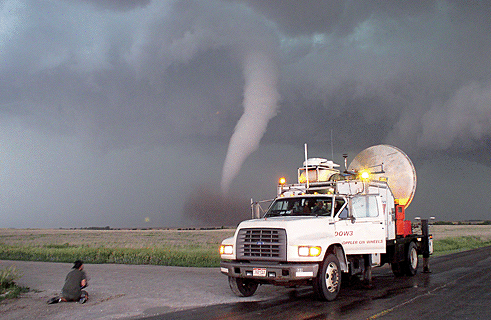Whirlwind of Good News in Tornado Season
June 6, 2012
After record numbers of tornadoes wreaked widespread devastation in 2011, and above-average numbers of tornadoes marked the early months of 2012, meteorologists finally have some good news. For the first time in seven years, the month of May has passed without a single tornado fatality in the United States. The month’s numbers stand in stark contrast to those of May 2011, which recorded 178 fatalities.

Researchers at NOAA say favorable atmospheric conditions led to a smaller-than-average number of tornadoes in May 2012. (© Byron Turk, Center for Severe Weather Research)
Ordinarily, May represents peak tornado activity in the United States, with an average expectation of about 300 tornadoes, according to researchers at the National Oceanic and Atmospheric Administration (NOAA). May 2011 experienced a total of 326 tornadoes, compared with this year’s preliminary tornado count of 122 for the month. If the numbers are confirmed, the count may be the lowest for any May since 1954.
Why were skies so quiet during May? A lack of wind shear, a condition in which wind speeds and directions change rapidly over a short distance, may be one reason. Wind shear is a key ingredient for tornado formation, and abundant wind shear conditions helped lead to the 758 tornadoes that tore across the United States in April 2011. Another factor may be the jet stream, a band of fast-moving air currents at high altitudes. Typically, moist air from the Gulf of Mexico helps fuel tornadoes throughout Tornado Alley, a region that stretches across the Midwestern, Plains, and Southern states, especially Texas, Oklahoma, Kansas, Nebraska, and Iowa. In 2012, the jet stream has been farther north, leading to drier air on the southern side of the current and fewer tornadic storms.
Additional World Book articles:


